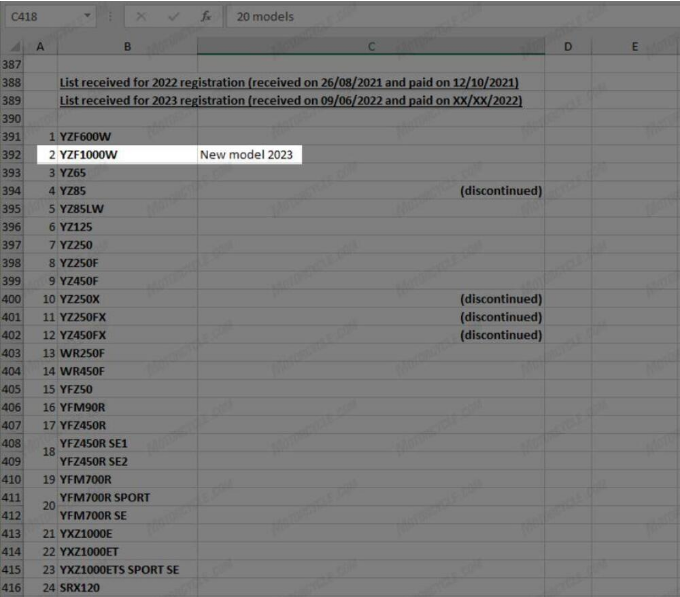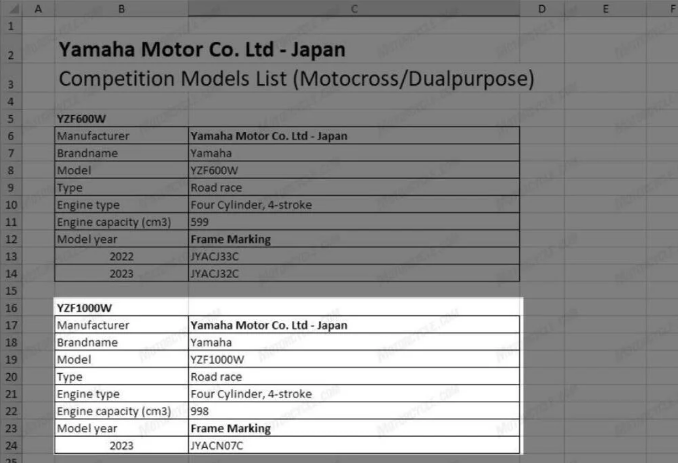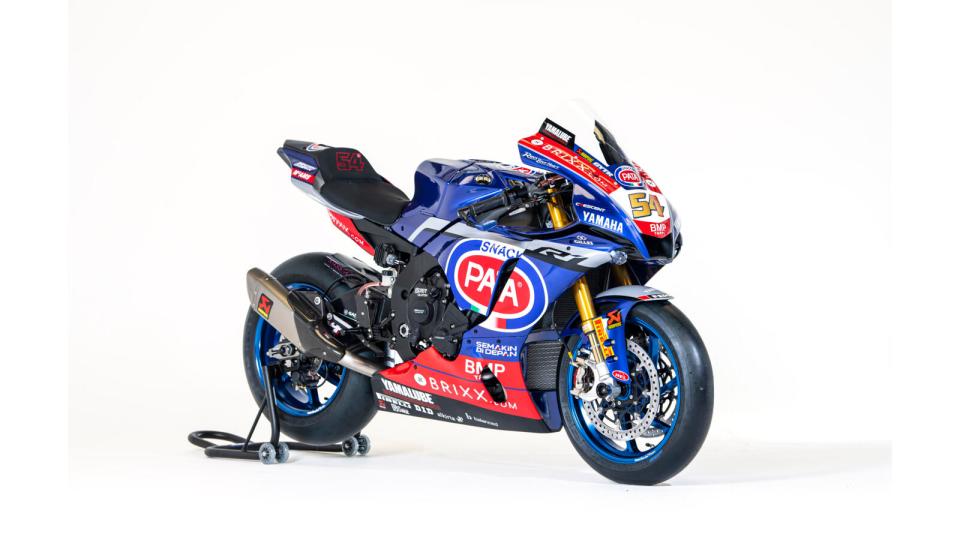The chances are high that Yamaha is preparing to launch a YZF-R1 track use as model year 2023.
This is suggested by a list of the International Motorcycle Federation concerning the models approved for competitions and which sees an unreleased YZF1000W registered on the 9th of June.
This list, updated on June 15 and found by the American colleagues of Motorcycle.com , mainly includes motocross, enduro, trial bikes, but also ATVs and side by side.
There are also some sports models such as the well-known Yamaha R6 (initials YZF600W) from 2022 which is on sale exclusively for track use , as it is not Euro 5 approved for road circulation.
In short, the similarity between the two “ W ” abbreviations of 600 and 1000 would suggest that it is a track model, given that the already existing and homologated ones are called YZF1000-R1 and YZF1000-R1M .
The specifications always give a four-cylinder in-line engine of 998 cc, while the code concerning the chassis provides some information and more thanks to the more well-known VIN code that appears in the US homologations.
The code JYACN07C indicates production in Japan (first and three letters), the letter "C", common to Yamaha cross models, would suggest a racing model, "N" would indicate the 998 cc four-cylinder (according to the notes R1).
It is more than legitimate to ask whether this is a model in its own right or whether it is connected to a renewed R1, given that the latest update of the hyper sporty Yamaha arrived in 2020 with the transition to the Euro 5 emissions legislation, while this last generation actually dates back to 2015.
The time could therefore be ripe for another generational leap - we recall for example the seamless road change patent applied to an R1 that would be a true exclusive - but there are currently no certainties and perhaps something will be known next autumn.




